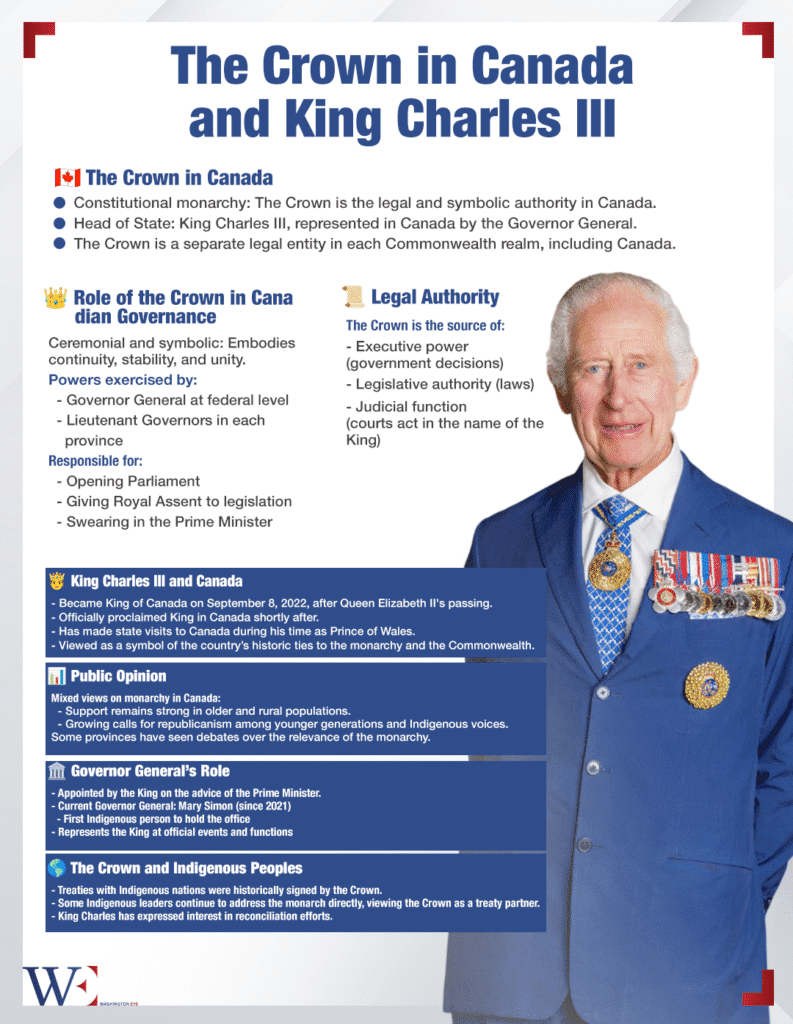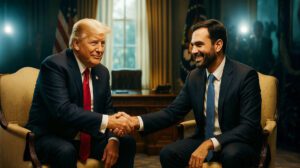When King Charles III visited Canada recently, it was not merely as a ceremonial figurehead, but as a constitutional symbol amid a shifting geopolitical landscape. His decision to open the Canadian Parliament—a gesture last performed by his mother, Queen Elizabeth II, in 1957—carries far more than historical resonance. At a time when Canada faces intensifying political pressure from its southern neighbor, the King’s presence was a diplomatic act wrapped in regal tradition. It underscored Canada’s sovereignty, reasserted its distinct constitutional identity, and offered subtle support to a new prime minister navigating treacherous international waters.
A Royal Echo with Political Weight
The opening of Parliament by King Charles III in Ottawa marks a rare event in modern Canadian history. While the Speech from the Throne is authored by the elected government, its delivery by the monarch reinforces the constitutional framework that places the King as Canada’s head of state, albeit in a symbolic and non-partisan role. As Daniela Relph of the BBC observed, this ceremonial moment “links Canada directly to its monarchical traditions while subtly underlining its separation from American republicanism”.
The timing of this royal act is crucial. President Donald Trump has recently stoked controversy by suggesting that Canada could become the “51st state” of the United States—comments that were widely viewed as both inflammatory and destabilizing. The Canadian government swiftly denounced the rhetoric, with Prime Minister Mark Carney calling it “an affront to our sovereignty” and “a reminder of why our constitutional structure matters more than ever”.
A New Prime Minister’s Test of Leadership
For Prime Minister Mark Carney, a former central banker with global experience but limited electoral history, the King’s visit was an opportunity to anchor his administration’s legitimacy. Carney took office amid economic turbulence driven by Trump-era tariffs and a populist surge in Canadian border regions. His immediate goal has been to stabilize both the economy and the national mood.
King Charles’s visit offered Carney a diplomatic platform. At a joint event in Ottawa, the Prime Minister described the King’s presence as “a testament to our enduring institutions and to the strength of our alliance with the United Kingdom”. Carney hopes this affirmation of ties with the British Crown not only mollifies concerns at home but also signals to Washington that Canada’s allegiances and identity remain rooted in its own constitutional traditions.
Soft Diplomacy on a Hard Edge
Though King Charles is constitutionally neutral, the strategic choreography of his visit sends subtle diplomatic signals. His participation in cultural events such as a community hockey match in Ontario, and his solemn tribute at the National War Memorial, emphasized not only shared history but also unity in the face of divisive rhetoric from abroad.
Critics argue that this soft diplomacy is outdated. Yet the symbolism of the Crown can often do what overt political messaging cannot. As one senior Canadian diplomat noted off-record, “The King says nothing politically, but his presence says everything we need to say to the U.S.—that we are not up for assimilation”.
Canadian Monarchy: An Institution Under Review?
The King’s visit has also reignited domestic debates about the monarchy’s place in 21st-century Canada. A recent Ipsos poll revealed that while 38% of Canadians support maintaining the constitutional monarchy, a slightly larger segment—43%—would prefer to move toward a republican model. However, support for the Crown has risen slightly in light of recent U.S. statements, suggesting that external pressures may be rekindling appreciation for Canada’s institutional uniqueness.
In his speech to Parliament, King Charles avoided direct reference to Trump or to the debate over the monarchy. Instead, he emphasized shared values: “freedom, cooperation, and the peaceful exercise of democracy”. His tone was deliberately inclusive, casting the Crown as a guardian rather than a governor—an approach that may help preserve its relevance in a changing world.
A Final Note: A Royal Visit with Constitutional Backbone
King Charles III’s 2025 visit to Canada will likely be remembered not for any policy pronouncements or royal glamour, but for the weight of what it represented. In opening Parliament, walking the streets of Ottawa, and standing beside a newly elected Prime Minister, the King quietly asserted a message of constitutional continuity and national independence.
At a time when international borders feel increasingly porous—ideologically and economically—Canada has leaned on its oldest institution to reinforce one of its most essential truths: that it is, and intends to remain, a sovereign nation. And sometimes, the quiet power of a monarch can speak louder than the boldest declarations from presidents.















